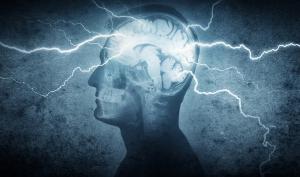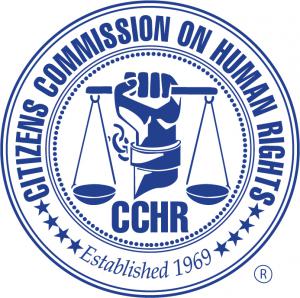
Group Condemns Electroshocking Patients 500 Times; Inquest Questions Death
CCHR says patients electroshocked hundreds of times against their will and 0-5 year olds still subjected to it, shows ongoing inhumanity in mental health system
LOS ANGELES, CALIFORNIA, UNITED STATES, February 17, 2020 /EINPresswire.com/ -- While most people believe electroshock treatment (ECT)—the passage of up to 460 volts of electricity sent through the body to cause a grand mal seizure—is no longer used in psychiatric practice, the recent report of a patient subjected to ECT 500 times is testimony to this ongoing abuse. An attorney with the Connecticut Legal Rights Project has been representing patients faced with court-ordered involuntary shock treatment—with one client unwillingly subjected to the shocks 500 times over five years. “I think it happens a lot more than people realize,” the attorney, Gina Teixeira said.[1]
This case, along with several coroner’s inquests into patient deaths following ECT has renewed calls from the mental health watchdog, Citizens Commission on Human Rights International to ban the procedure that the FDA acknowledges “long-term safety and effectiveness of ECT treatment has not been demonstrated.” Many patients take this further saying it is torture disguised as “therapy.”
Teixeira also represented a man who was court-ordered to undergo ECT, although he was competent to refuse. Teixeira told the Connecticut Post, “The client told me he is really scared and asked me to help him. This should not be forced on him.” She filed for an emergency order to halt the ECT, citing the man’s fear of side effects, including memory loss. The Connecticut Assistant Attorney General Emily Melendez, acting for a psychiatric facility, opposed this. As the Connecticut Post reported, “Incredibly, Melendez asserted in her motion that the patient ‘does not allege any facts to support that such side effects exist or that if they do, that the risk of harm in not providing this treatment outweighs whatever other harm might come from the treatment.’”[2]
While the man has not since been electroshocked, the Assistant AG’s response, at best, shows how grossly misleading information about ECT is, CCHR says. Even the FDA recognizes it can cause disorientation, confusion and memory loss.[3] In 2018, Somatics, the manufacturer of an ECT device, warned that “patients may experience permanent memory loss or permanent brain damage.”[4]
An inquest in England this February investigated how a mother suffering from “catatonic” depression after her husband was diagnosed with a brain tumor, had died following a session of ECT. A nurse found her suffering a seizure that stopped her heart. A cardiac team failed to revive her, and the mother-of-one was pronounced dead.[5] A post mortem could not find a conclusive cause of the death, but another UK coroner’s inquest in 2016, found Elsie Tindle, 71, suffered a permanent epileptic seizure from electroshock, causing irreparable brain damage, leading to her death.[6] In 2016, a coroner in Melbourne, Australia found that Gerard Helliar, 62, died after forcibly receiving hundreds of bouts of ECT that imposed pain, discomfort, stress and a sense of hopelessness, leading to his suicide.[7]
Jan Eastgate, president of CCHR International, says the fact that ECT is still resorted to is testimony to the ongoing inhumanity in the mental health field and the power of misleading marketing about not only electroshock being “treatment,” but also that any diagnosis justifies its use. Eastgate’s story of being administered ECT as a teenager 45 years ago, told in CCHR’s new documentary, Electroshock: Therapy or Torture, highlights how she—and many women—were wrongly diagnosed as “depressed” when they had undiagnosed and untreated physical conditions: in Eastgate’s case, an underactive thyroid that manifests in similar symptoms listed for depression. They are also told they have a “chemical imbalance” requiring antidepressants and ECT.
Psychologist Philip Hickey, Ph.D. writing in Behaviorism and Mental Health, notes: “The spurious chemical imbalance theory of depression is arguably the most destructive thing that psychiatry has ever done. Worldwide, millions of individuals are taking antidepressants, often with a cocktail of other drugs, because they have been told the blatant falsehood that they need the pills to combat a brain illness—a ‘real illness just like diabetes.’”[8]
Currently, he said, “some psychiatrists and psychiatric facilities are backing away from the hoax.” However, “what needs to be stressed is that the impetus for these diluted recantations came—not from psychiatry—but rather from the anti-psychiatry movement. It was the thousands of protesting voices that finally persuaded psychiatry that some backing off was needed, particularly as no proof of the theory had ever been uncovered.”
Hickey questions how “does one address the stigma associated with ‘psychiatric disorders’ and the low status of the psychiatric profession at social and political levels,” especially as “the routine prescribing of pills and electric shocks continues to be psychiatry’s only stock in trade….”
“For several decades psychiatry has been lying to its customers that depression is a pathological state caused by a shortage of serotonin, and can, apparently miraculously, be diagnosed without ever examining the brain but simply by scoring yes on five of the nine items on the facile checklist.” The treatment hasn’t changed, he adds. It’s still drug and “if that doesn’t work, we’ll try electric shocks.”[9]
CCHR Int recommends people sign the petition in support of banning ECT which already has more than 113,700 signatures.
CCHR is the mental health watchdog responsible for more than 180 laws that now protect patients from damaging practices. DONATE to support its work here: https://www.cchrint.org/cchrint-donate/
References:
[1] “Psychiatric Hospitals Can Still Force Patients to Accept Shock Treatment. One Connecticut Patient Has Been Shocked 500 Times in Five Years,” Reason, 11 Feb. 2020, https://reason.com/2020/02/11/psychiatric-hospitals-can-still-force-patients-to-accept-shock-treatment-one-connecuticut-patient-has-been-shocked-500-times-in-five-years/
[2] Op cit., Reason
[3] Op.cit., Federal Register
[4] http://www.thymatron.com/catalog_cautions.asp
[5] “Hungerford mum suffering from ‘catatonic’ depression died after a session of electroconvulsive therapy, an inquest heard,” Reading Chronicle, 6 Feb. 2020,
https://www.readingchronicle.co.uk/news/18215628.hungerford-mum-suffering-catatonic-depression-died-session-electroconvulsive-therapy-inquest-heard/
[6] “Woman died after NHS electric shock therapy was given without consent or second opinion,”, A coroner has expressed concern after the death of Elsie Tindle, who was mentally ill and given the treatment as a ‘last resort’,” Daily Mirror, 11 Mar. 2016, https://www.mirror.co.uk/news/uk-news/woman-died-after-nhs-electric-7540901
[7] https://www.theage.com.au/national/victoria/grandfather-forced-to-undergo-ect-before-preventable-death-20180418-p4zacy.html
[8] Phil Hickey, “The Chemical Imbalance Theory of Depression: Where Is It Going?,” Behaviorism & Mental Health, 13 Feb. 2020, http://behaviorismandmentalhealth.com/2020/02/13/the-chemical-imbalance-theory-of-depression-where-is-it-going/?utm_source=feedburner&utm_medium=email&utm_campaign=Feed%3A+BehaviorismAndMentalHealth+%28Behaviorism+and+Mental+Health%29
[9] Ibid.
Amber Rauscher
Citizens Commission on Human Rights
+1 323-467-4242
email us here
Visit us on social media:
Facebook
Twitter
EIN Presswire does not exercise editorial control over third-party content provided, uploaded, published, or distributed by users of EIN Presswire. We are a distributor, not a publisher, of 3rd party content. Such content may contain the views, opinions, statements, offers, and other material of the respective users, suppliers, participants, or authors.



